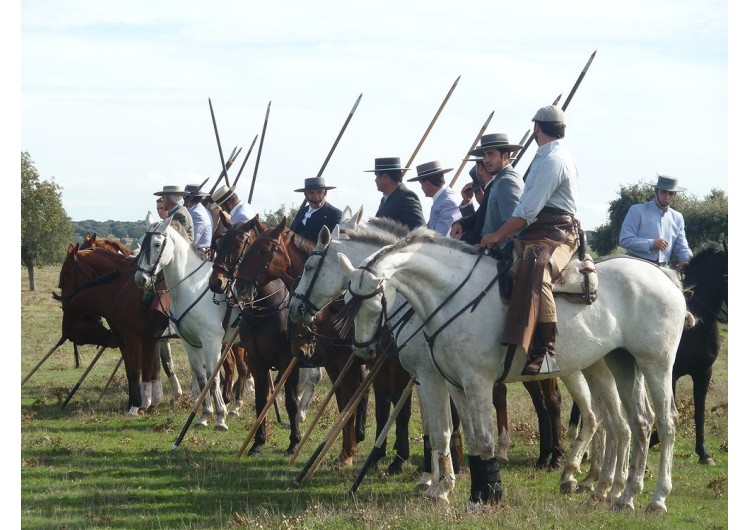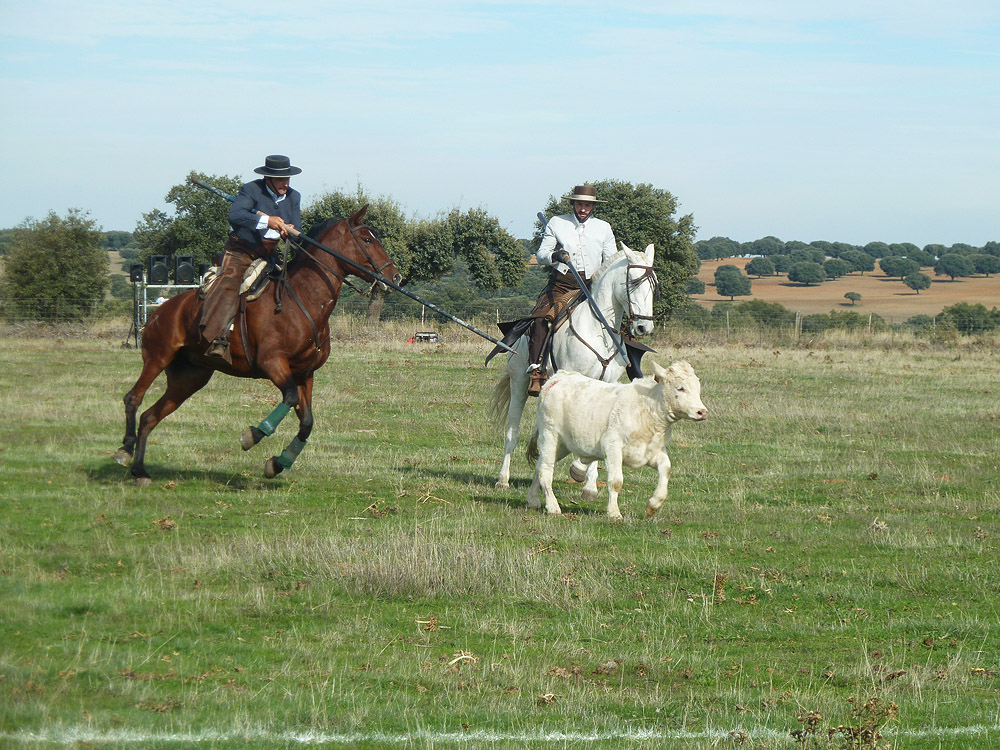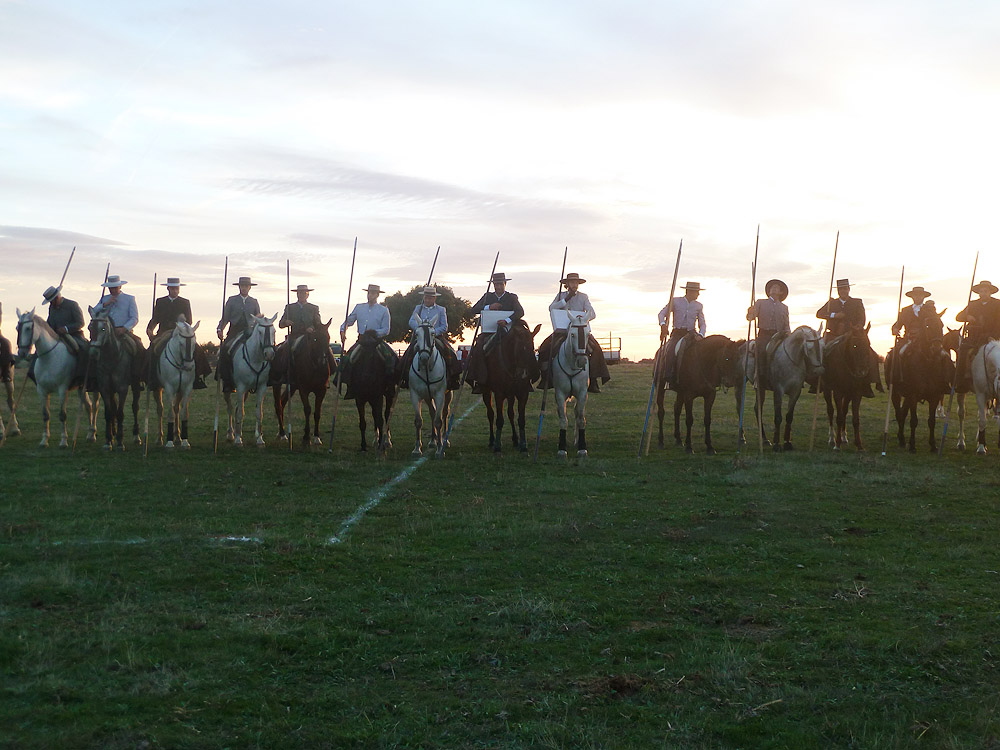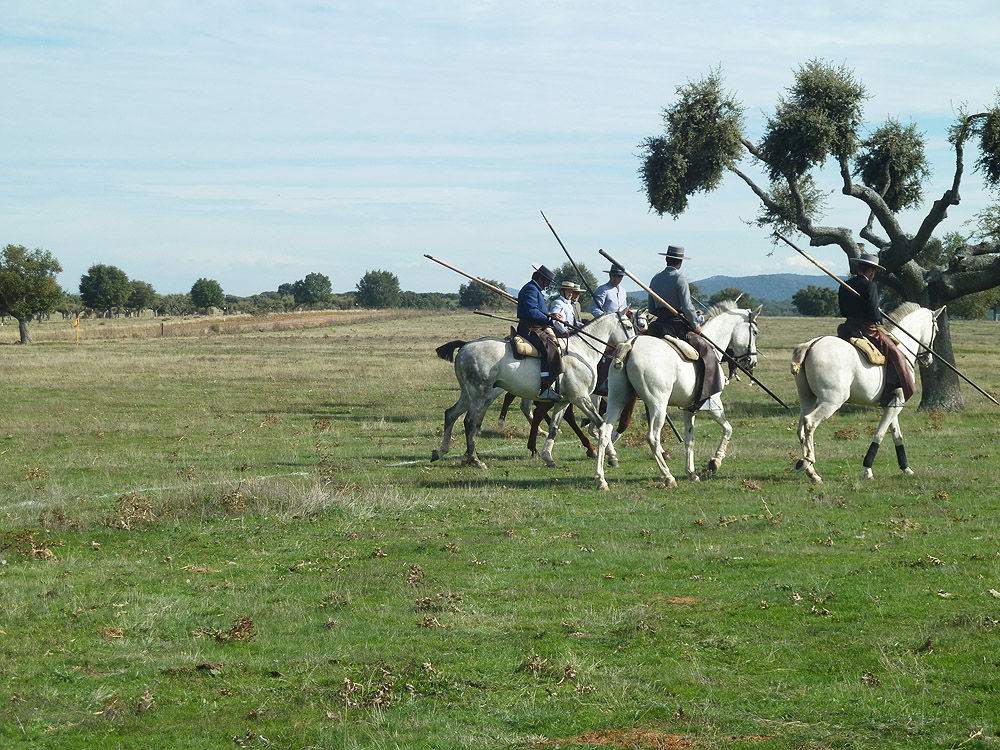Horse riding must-have equipment list for doma vaquera

Doma Vaquera is a style of riding that allows the rider to perform daily tasks on horseback in a working cattle farm. It developed especially from the use of the horse to handle the fighting bulls of Spain and grew out of decades of daily work with them in the open field.

In this article we will be describing the main aspects of this style of Spanish vaquera riding and the perfect riding equipment in this discipline:
Horse riding equipment list for doma vaquera: Spanish must-have equipment
Doma vaquera is the equestrian discipline that has its origins in country riding and in the exercises performed in the field with cattle.
Although it is currently practiced in more than 40 countries around the world, it is a discipline that has its origins in the Spanish tradition, specifically in regions where cattle raising was the main livelihood of families, such as Andalusia, Extremadura and Salamanca.
The exercises performed by the rider on the horse to control the fighting cattle and separate the herds gave rise to the current sport known as doma vaquera.
This Spanish tradition has led to the PRE, Pura Raza Espanola or Pure Breed Spanish Horse, being the main protagonist, although it does not close the door to other breeds such as the Anglo-Arabian, the Anglo-Hispanic or the English thoroughbred.
If you are going to practice this type of riding discipline you will have to consider some particular equipment such as vaquera saddle, Spanish blanket, woolen poncho, vaquero saddle pad or Spanish hat.
How do you dress a horse for Doma Vaquera horse riding?

The main element is the Vaquera saddle (Spanish-style saddle), a saddle covered with sheepskin that makes it very comfortable (riders spend many hours on the horse) and protects from humidity and cold. This saddle is called a mixed saddle when it has a sheepskin on the front, behind the pommel.
Some of these saddles are made of smooth leather, but it is very common to see more ornate models, with mottling on the back shell or embossed-ornamented leather on the front and back.
On the other hand, the vaquera saddle is usually accompanied by other very typical and useful elements, such as:
The Vaquero saddle pad, which in the case of the Vaquera saddle is made of enlisted canvas, a strong and rub-resistant material with the typical striped pattern (black and white, brown and white, red and yellow...).
Additionally, the vaquera-style bridle has a leather or natural hair fringed flycatcher on the browband. This last one, very used in pilgrimages, is a beautiful adornment whose colors can vary. The buckle of these horse bridles is made of black-oiled iron or stainless steel. It is usually accompanied by a vaquera-style bit, also black-oiled.
Moreover, we have to consider the Spanish blanket, which is placed in the front and its typical print is also striped when it is made of canvas, although it is usually made of wool, since the origin of this element was to have a complement for the coldest days in the field work. It may or may not have a pocket.
Vaquera saddlebag is another very practical and decorative component. Like the stirrup blankets, it can be made of canvas or wool, matching the rest of the accessories. This type of saddlebag comes with an opening to fit into the rear shell (concha) of the vaquera saddle.
The vaquera crupper is a fastening element that holds the saddle in place and prevents it from sliding forward. In mixta vaquera saddle it has two straps because these saddles usually have two rings for attachment.
And finally, we have the vaquera-style girth is also different, it is longer and has square buckles made of blued or black-oiled iron.
How to dress in doma vaquera

Riders in Doma vaquera wear a traditional Spanish costume whose characteristic colors are black, gray, brown or beige. It is very common to wear this outfit in traditionally Spanish pilgrimages such as El Rocio or La Feria de Abril in Seville.
Furthermore, both man and woman riders wear a typical Spanish jacket more or less decorated, a jaretas shirt or guayabera, a Spanish vest and a sash at the waist. To compete it is mandatory to wear a wide-brimmed Spanish hat, in the aforementioned colors, although the rider also usually wears a Spanish cap.
In the lower part of the clothing, the man completes his outfit with a pair of Spanish trousers when he wears boots or a special type of vaquero-style trousers when he wears booties, also of traditional style. Amazons wear a traditional Spanish horse long skirt.
aMoreover, a very typical element are Spanish fancy chaps, which covers both legs and is tied at the back. It is worn with the boots and the pants back.
Also the spurs are the classic Spanish-style vaquera spurs (for Spanish doma vaquera), usually in blackened and accompanied by spur straps also in Spanish vaquera style.
Finally, for the most intense cold, Spanish riders use the poncho, which is made of wool and have the advantage of leaving the arms free to maneuver comfortably on the horse.
Additionally, the garrocha is a very long wooden stick used in doma vaquera exhibitions and in field work.


Comments
No comment at this time!
Leave your comment